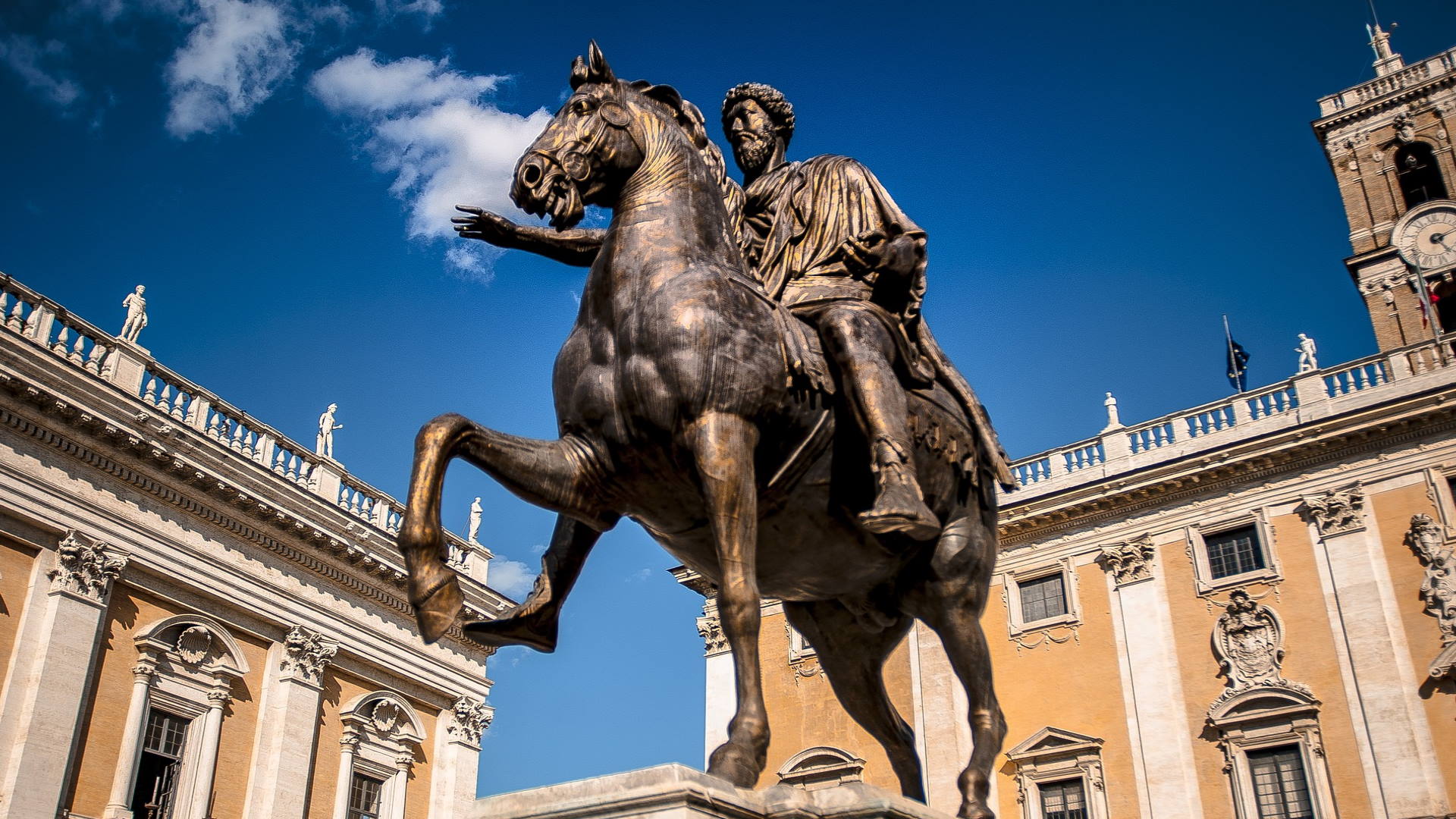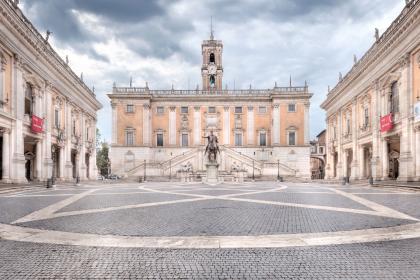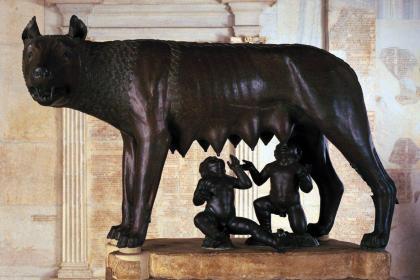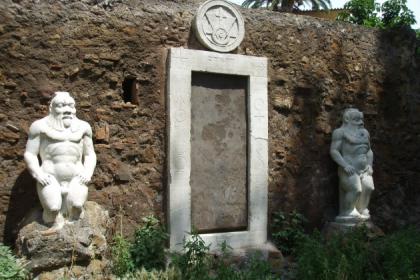
Despite being the lowest and smallest of the seven hills of Rome, the Capitoline Hill is perhaps the most linked to the city historical events. Once the site of an ancient village, the Capitolium was the centre of Roman political and religious activities and was chosen for constructing numerous temples dedicated to Roman gods.
The rock of gold, punishment and betrayal
Legend has it that, at the time of the foundation of Rome, the hill was conquered by the Sabines. It happened because of the treason of Tarpeia, daughter of Spurius Tarpeius, the guardian of the Capitoline fortress. The young woman allegedly opened the city gates to enemies in exchange for the armillas, rings and gold bracelets that the Sabines wore on their left arm. However, the girl had no luck because, once inside, the Sabines betrayed her, throwing their shields and killing her.
Most likely, the story originates from the Goddess Tarpeia of Mons Tarpeium, where the statue of the tutelary deity is said to have stood like a trophy on a pile of weapons. Throughout antiquity, the place, called Saxum Tarpeius, the Tarpeian Rock, was sadly used as a ravine to throw off the traitors.
An army of geese!
One of the most famous episodes in the history of Capitoline Hill relates to the friendly palmipeds and the Sack of Rome of 390 BC. On 18 July, the Gauls defeated the Romans near the Allia river, reaching and sacking the city in the following three days. They besieged the hill where all those who had not fled with the enemy advance had taken refuge. Here were the geese sacred to the goddess Juno - the only animals not sacrificed by the hungry survivors. Disturbed by the hostile army, the geese began to squawk, alerting the defending soldiers and saving the symbolic hill of Rome.
The event was interpreted as the goddess divine intervention. So, in 353-344 BC, a temple of Juno Moneta (coin or "cautionary") was erected. The building was the seat of the first mint (coin workshop from the name of the temple, from which the current term originates).
Wine and divine
Obelisks, temples, statues and even a pyramid: from the 1st century BC, a real "Egyptomania" spread all over ancient Rome, following the conquest of the territory by Julius Caesar and Augustus. Among the Egyptian testimonies in the city, we mention the two magnificent basalt lions from the Iseo Campense, the temple dedicated to the Egyptian gods Isis and Serapis, built by Domitian in Campo Marzio. The statues were initially placed at the entrance of the church of Santo Stefano del Cacco and then donated by Pope Pius IV Medici to the Roman people in 1562. They were meant to decorate Michelangelo's Cordonata, the imposing staircase leading to the Capitol square, designed to allow knights to climb easily.
In 1587, when the Acqua Felice aqueduct reached Capitoline Hill, the lions were transformed into fountains, and two travertine chalices were placed in front. On special occasions or solemn feasts, instead of water, a white and red wine from the Castelli Romani flowed from the mouths of the two feline sculptures to the great joy of the Roman people.
A prophetic owl
At the centre of the magnificent Piazza del Campidoglio stands elegant and severe one of the symbols of Rome: the bronze equestrian statue dedicated to the great emperor-philosopher Marcus Aurelius. Known simply as Marc'Aurelio or Marcurelio, the monument is the only one still intact among the twenty-two "equi magni", the equestrian statues larger than the real. The Christians didn't destroy the sculpture because of the mistaken belief that it depicted Constantine, the first Christian emperor. It was probably erected in 176 AD in the Roman Forum or in the square with the dynastic temple that surrounded the Antonine Column. In 1538, it was moved from the Lateran by the will of Pope Paul III Farnese and placed on Capitoline Hill. Just over 4 meters high, made of bronze and originally covered with gilding, it hides one of the most feared superstitions of the past, linked to the tuft of hair between the ears of the horse, popularly called "owl". The Romans believed that the statue concealed a golden mantle, so they feared that bad weather could make the legend of "Marcus Aurelius discovers in gold" come true. When the statue was back all golden, the "owl" would sing, announcing the end of Rome and the whole world.
After its placing, the pontiff instituted the title of the Guardian of the Horse, a prestigious role symbolically rewarded with various goods, such as pepper, wine, wax, gloves and confetti. Was it value or superstition? Traces of the ancient gold layer are still visible on the original, now kept inside the Capitoline Museums and replaced in the centre of the square by a bronze copy in the late Nineties.
Sacred and profane: a skull, three books and a treasure
One of the most legendary buildings on the Capitoline hill is the Temple of Capitoline Jupiter, dedicated to the Triad of Jupiter Optimus Maximus, Juno and Minerva. Today, almost nothing remains, except for a part of the foundations and the podium visible in Palazzo Caffarelli, inside the Capitoline Museums. The temple has very ancient origins: it was built in the 6th century BC. by the Etruscans Tarquinio Prisco and Tarquinio il Superbo, the fifth and seventh king of Rome.
It is said that, during the excavation work, a "caput humanum integra facie" was found, a human head with an intact face. For some, the skull of the Etruscan leader Aulo Vibenna; for others, the head of a statue, perhaps of the Goddess Tarpea, mother of all, goddess of war and death.
The discovery aroused astonishment and perplexity: to resolve the mystery, the haruspices, the priests who interpreted the entrails of sacrificed animals, were then consulted. After several attempts, they concluded that the head meant that Rome would become "caput mundi", the capital of the world.
Divination and the temple were always closely linked. Not surprisingly, in a stone container hidden in the basement inside the sacred building were the Sibylline Books. a collection of oracles in Greek that, according to tradition, the Sibyl of Cuma sold to Tarquinius Priscus or Tarquinius the Superb. Only the Quindicemviri, a small college of priests, could consult the three books, now lost, at the request of the Senate, in serious situations. It happened to find out the "fata et remedia romana" (the Roman prodigy and remedy) and avert future crises, avoid the gods anger or restore peace between them and the Romans.
But the stories do not end there. According to tradition, the ancient sanctuary, whose roof was covered with gold foil, hid an immense treasure under its foundations. The legend says that it included gifts of kings, precious objects, gold and silver, which have never been found, despite the research, excavations and demolitions that have affected the area.
Piazza del Campidoglio (The Capitoline Hill)

 Condividi
Condividi
The Capitoline museums

 Condividi
Condividi
Stories of esoteric and symbolic Rome

 Condividi
Condividi











































